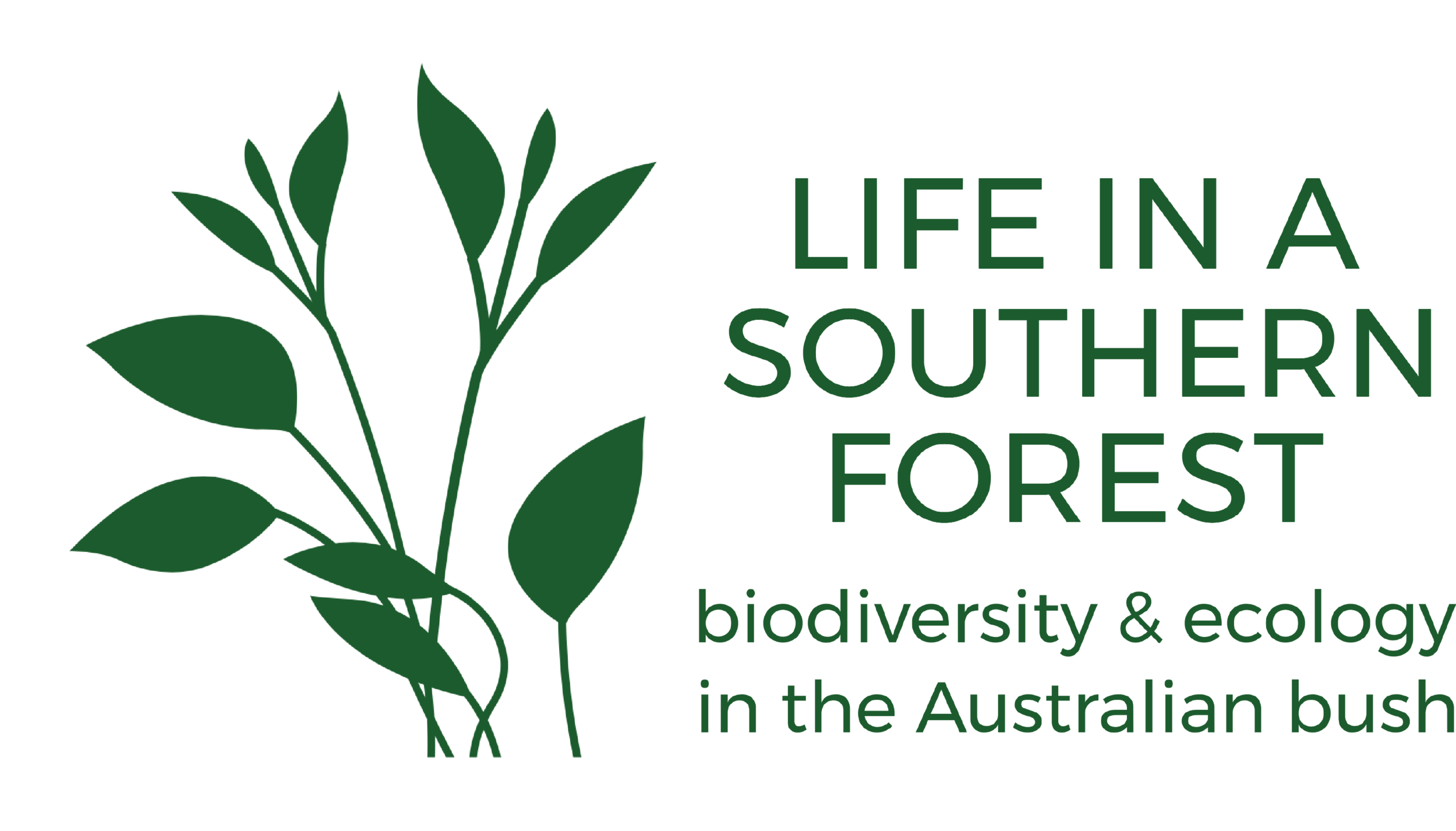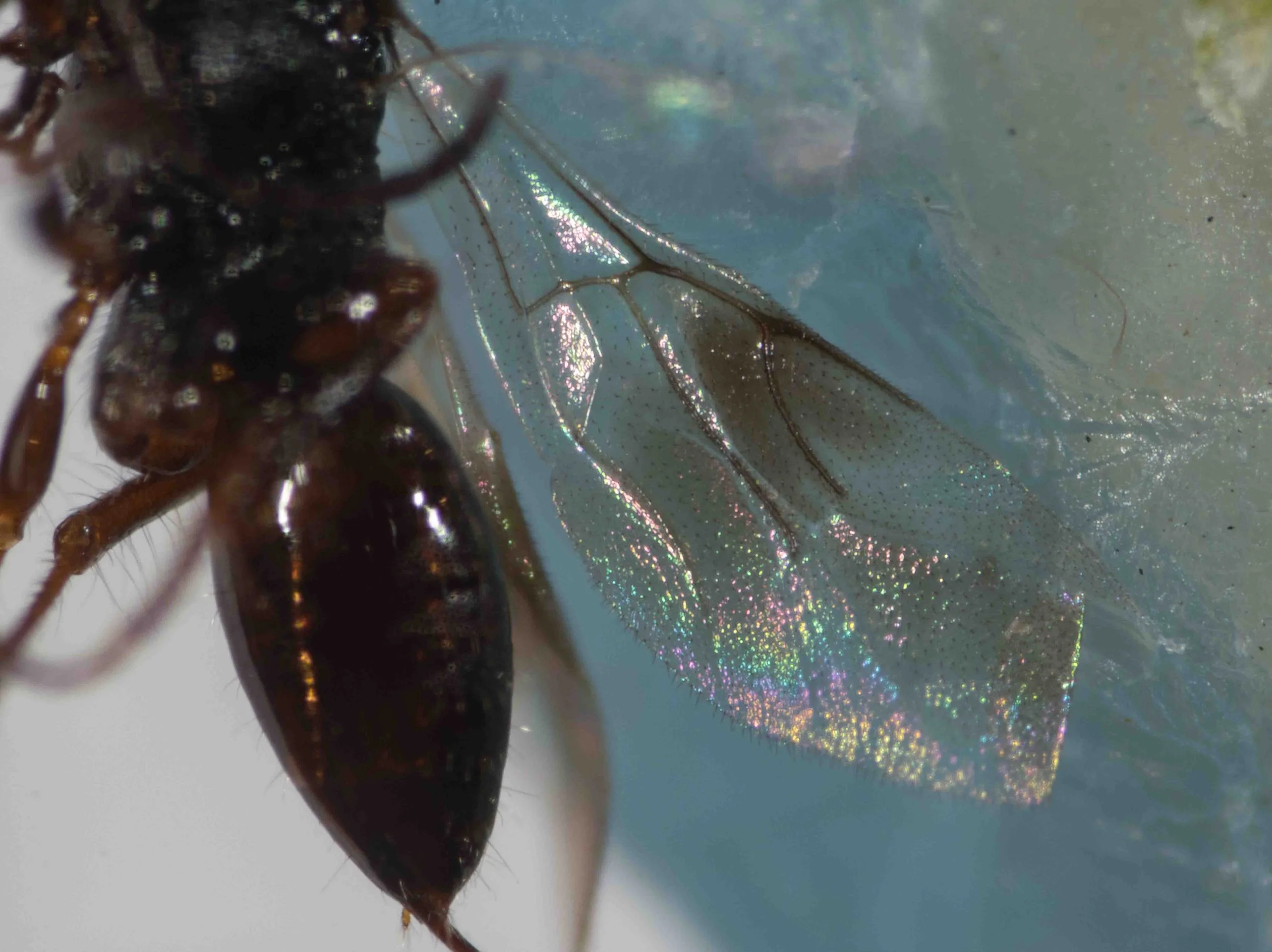
forewing with dark medial blotch/band
This feature distinguishes M. lilliputiana from all other species in the minuta species group. And it is quite unambiguous, visible even in the field photos of the live insect.
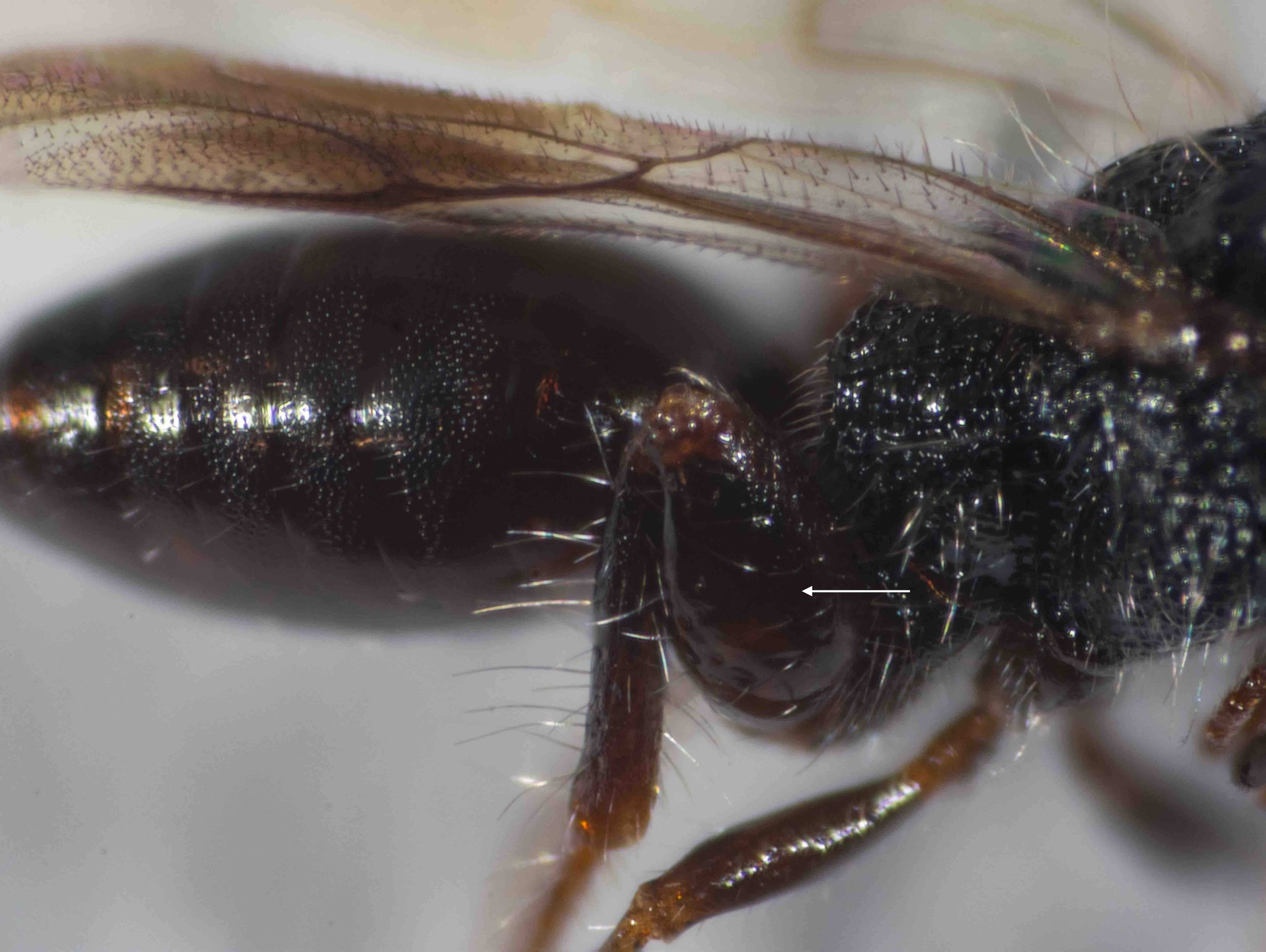
leg colour
Legs largely black, hind femora (arrow) entirely black. Many species in the minuta group have orange or yellow-brown legs. The colour of the hind femora is particularly discriminating.
Shaw lists this among the diagnostic features for the species, in combination a forewing medial band & glabrous ovipositor (Shaw, 1990, p. 1026).
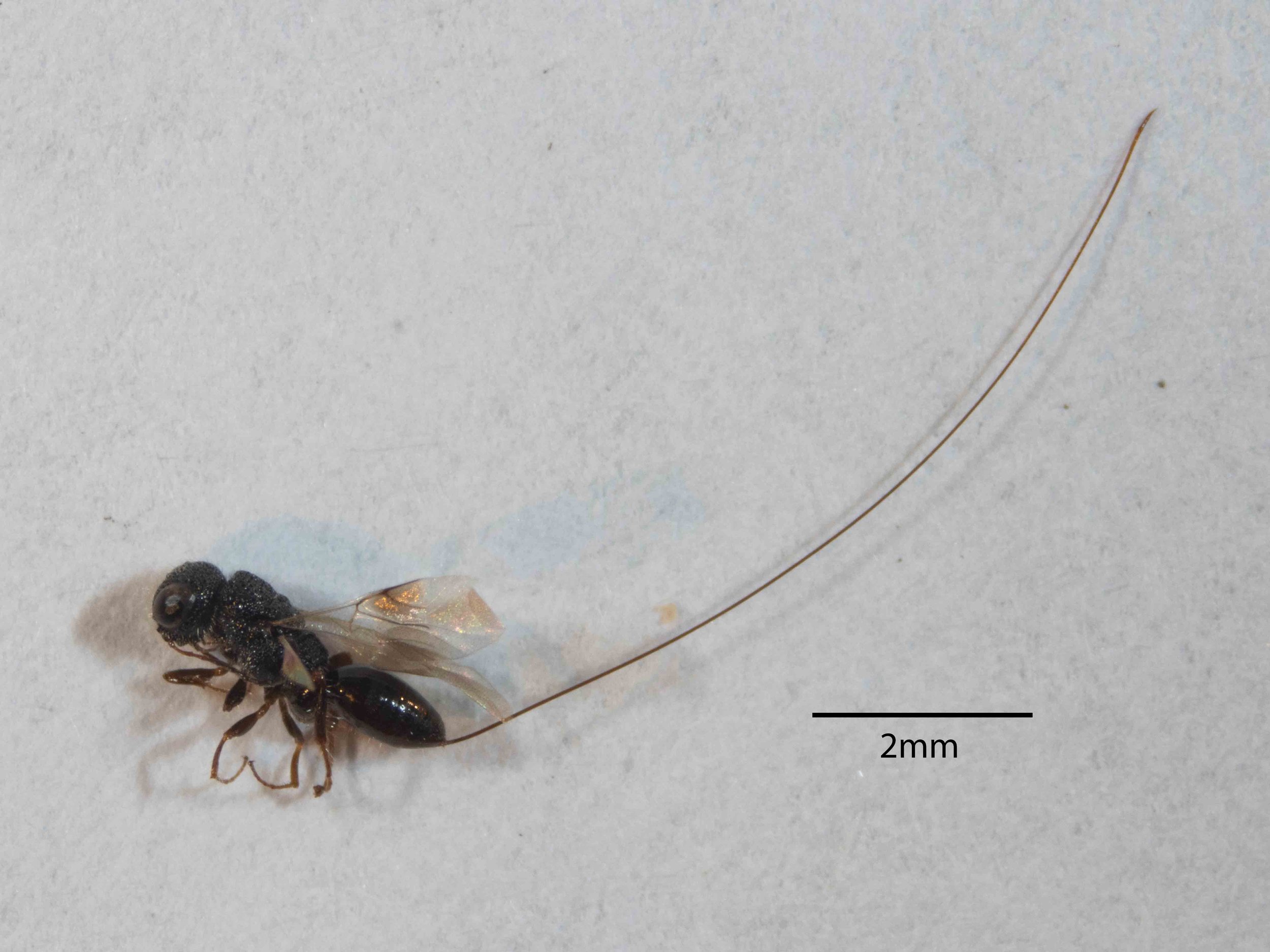
ovipositor length
The relative length of the ovipositor to the body is ~3.1 …. which is perfectly in range for M. lilliputiana (2.38-3.67) but much shorter than for the similar species M. minuta (5.72-7.65).
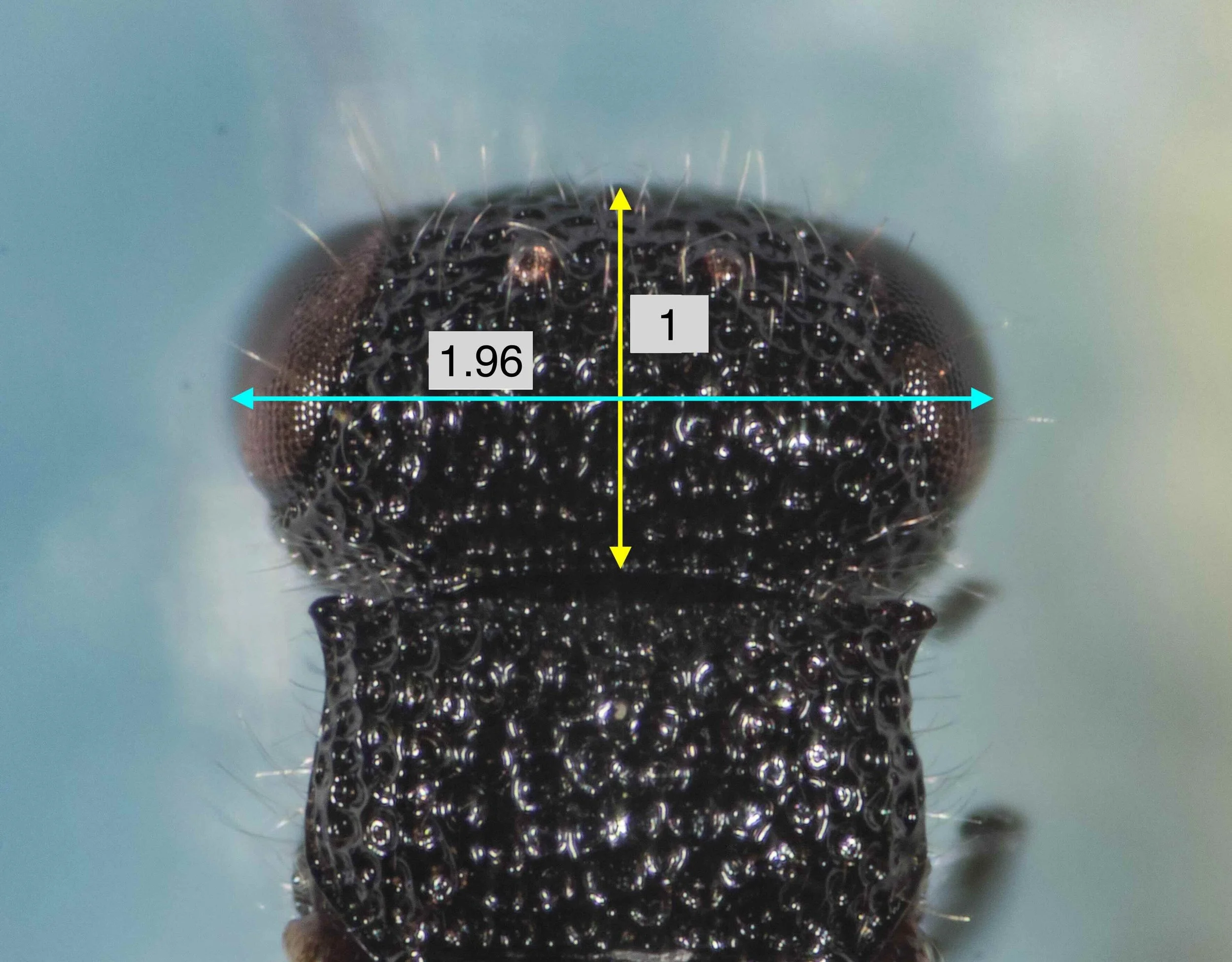
head shape
Strongly transverse, as are all in the minuta species group. The width/length ratio is 1.96, which is within range for M. lilliputiana (1.48-2.03)
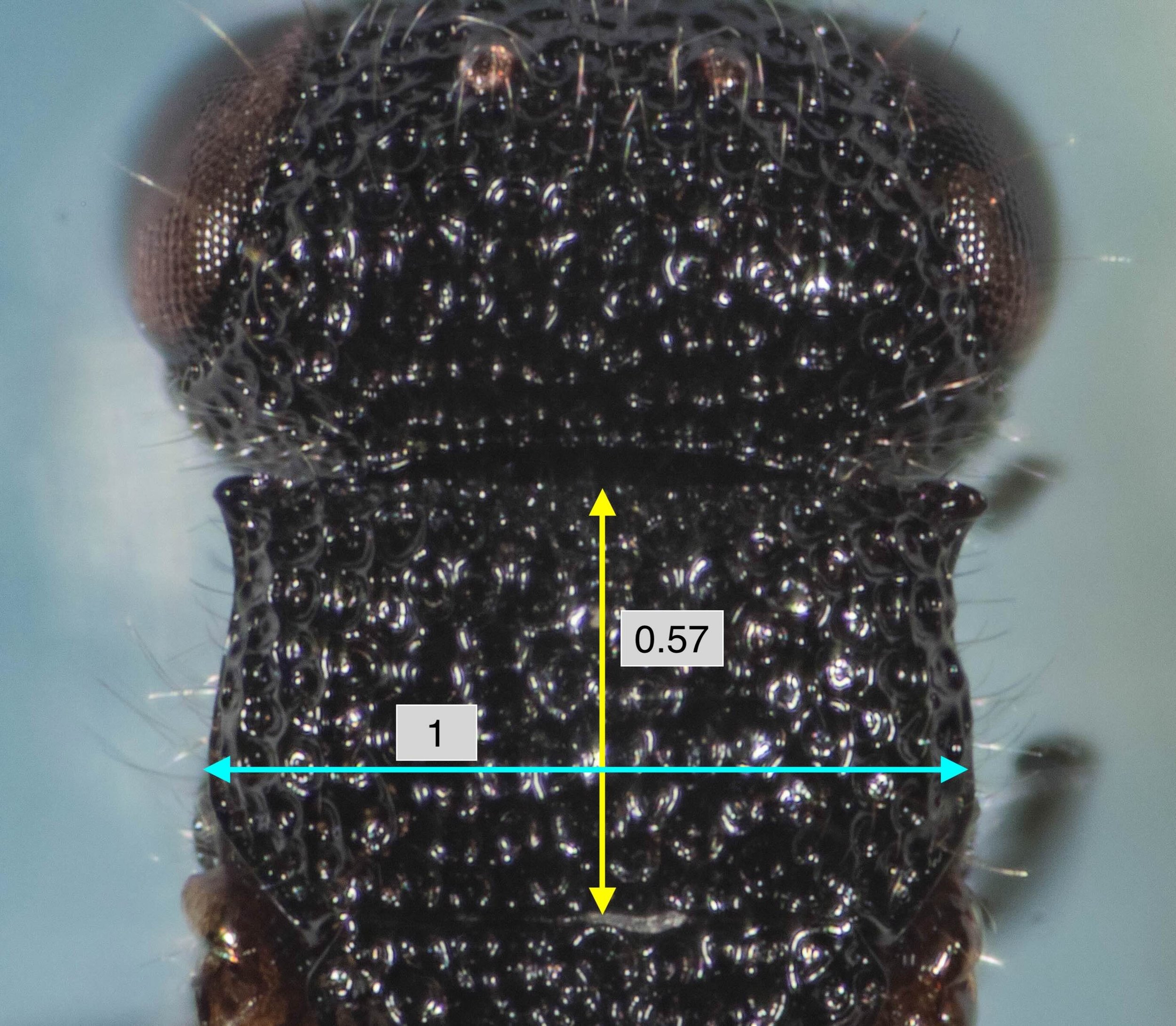
mesoscutum shape & texture
The length/width = 0.57, which is within known range for M. lilliputiana females (0.51-0.61).
Sculpturing matches Shaw’s description for M. lilliputiana … “deeply and evenly foveate-reticulate; median sulcus absent, obscured by foveae” (1990, p. 1027).
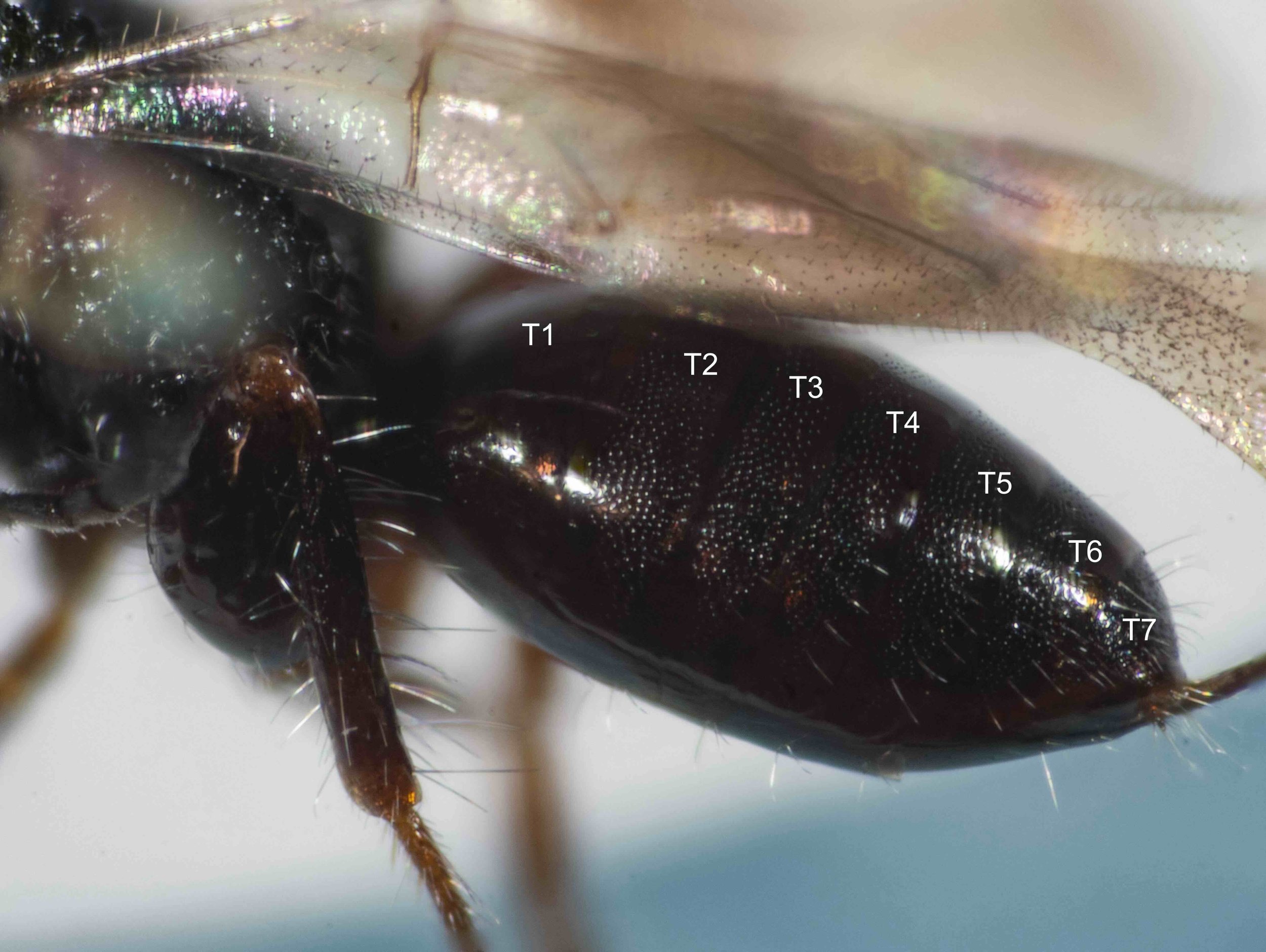
metasoma microsculpture
The metasoma of Megalyra is described by Shaw (1990) as follows:
“ Elongate, subcylindrical, not compressed: T2-T7 often with some microsculpture, varying from faintly shagreened to densely punctate, otherwise mostly smooth.” (p 1008).
Shaw’s description of M. lilliputiana is as follows:
“T1 and sterna smooth; T2-T7 densely punctate except narrrow smooth apical margins of T2-T6.” (p 1027).
The microsculpture of T2 is also referenced in the final step of the key, distinguishing M. lilliputiana from M. minuta:
“Tergum 2 entirely coarsely punctured except for a narrow smooth apical margin ….. M. lilliputiana
Tergum 2 imbricate on basal ½, entire apical ½ smooth ….. M. minuta.” (Shaw 1990, p. 1013)






